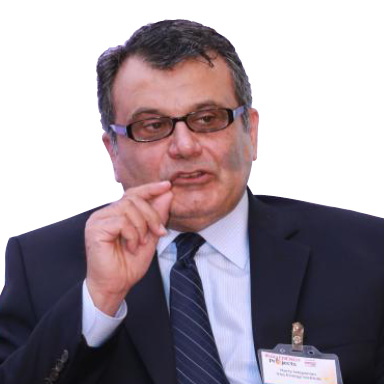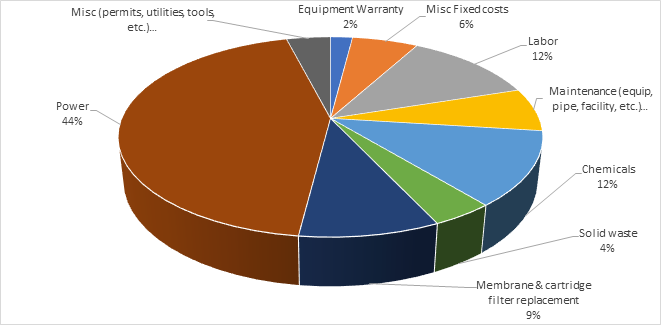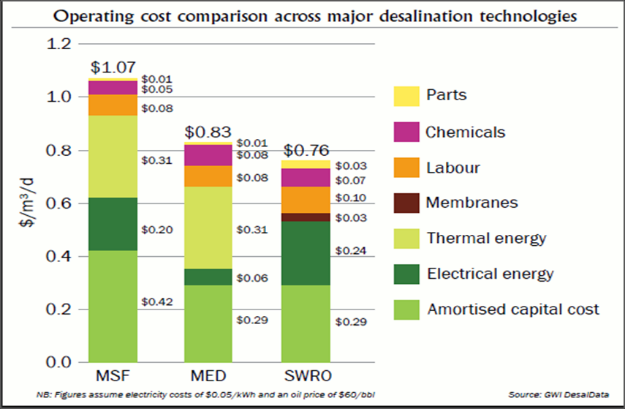Innovative technologies and smart systems have strong potential for reframing existing systems and addressing key challenges associated with water use, especially in the Middle East, where scarcity is an issue

Innovative technologies and smart systems will provide an answer to addressing water demand in the GCC region countries, says Harry Istepanian, an Independent Power and Water Consultant based in Washington DC, United States.
Istepanian highlights the great potential for such innovations, adding that the applications will greatly vary to include more effective use of rainwater harvesting and management of stormwater retention, as well as using GIS-based tools to help municipalities monitor the water reticulation system, to conserve and reuse water by reclaiming and reusing wastewater from public hospitals, schools and universities in steam and chiller plants, thereby reducing costs.
Such IoT and AI applications are vitally important to the concept of a ‘smart city’, Istepanian says. They are becoming more of a reality in view of the rapid development of 5G networks, he adds. “Applications, such as ‘smart water system’ for monitoring the condition of pipelines, water quantity and quality, and smart water meter reading are among many IoT applications,” he says. “The water quality in the water distribution system is a serious factor that affects public health, and smart water system provides a user-friendly interface to monitor the water quality in houses and take remedial measurements, if necessary.”
Providing an example, Istepanian discusses how Swedish multinational networking and telecommunications company, Ericsson and Swedish-Finnish multinational telephone company, Telia are collaborating with the City of Stockholm on developing real-time water quality monitoring, using a system of IoT sensors located throughout Stockholm’s entire water system. “The network is monitoring basic water quality parameters, such as conductivity, pH, temperature, dissolved oxygen and oxidation-reduction potential,” he says. “In addition, big data analytics will be used together with development of water modelling algorithms that will be able to filter through the sensor data and give bigger picture information about water quality changes.” Istepanian explains that such changes could alert the city and the water utility to events such as an algal bloom or a discharge of contaminated industrial wastewater, while giving them information about where and when it occurred.
Istepanian says that wastewater monitoring and treatment is another upcoming application in IoT that can treat the wastewater and use it for gardening, thereby saving the amount of water to a great extent. “Smart gardening uses a set of IoT sensors to detect the temperature, light, water, soil moisture and a mobile application to remind the need and amount of water and nutrients for the plants,” he says. “Smart Irrigation, using IoT-based mobile applications, have already been developed in farming to control the amount of water for crops based on the surrounding temperature.” Such applications, he says, also manage the whole irrigation system by smartly monitoring the soil and growth of the crops, and the irrigation sprinkler will get activated whenever necessary, thereby reducing the water wastage and workload.
Most of the applications have been developed in the last few years, which clearly depicts the speedy growth of IoT, especially in water applications, Istepanian says. “As IoT is growing every day with new technologies involved, new challenges arise,” he says. “One of the main challenges in smart water system is managing the cost, energy and efficiency required for water distribution system.” In some areas, especially in the context of the Middle East, Istepanian points out, more work needs to be done that is adaptable to the specific requirements of the region in terms of improving drinking water usage and quality.
Speaking on smart systems in terms of enhancing operations of water desalination, Istepanian says that one of the most critical objectives of IWPPs is maintaining low product cost while achieving high plant availability. “To this end, smart automation and Artificial Intelligence could have a meaningful impact on a desalination plant’s financial performance, in an attempt to simplify plant operation and optimise its performance, while maintaining its safety,” he says. “Specifically now, IWPPs are looking for means to minimise the cost of the freshwater production through cost reduction of the energy and chemicals consumed by the plant.” This is important, he says, considering thermal desalination and SWRO processes consume considerable amounts of energy and chemicals for feedwater pre-treatment and product (distillate) post-treatment.
Istepanian adds that water use can be optimised through the use of advanced control strategies that can stabilise the operation of the plant at high-efficiency operating points while handling efficiently the different constraints on the process variables. “Big Data could be used for analysing the plant’s historical operating data, which can be mined for information useful for improving plant performance and safety,” he says. He adds that if examined and correlated carefully to show trends of the significant performance parameters, such as production rate, quality of product, energy and chemical consumption and fouling, as a function of the process variables, they could teach the operators a lot about the influences of process variables that perhaps could not have been predicted by intuition or even modelling.
This could potentially have a huge impact on mitigating operating cost, in view of the numbers Istepanian shares. “The cost of seawater desalination,” he says, “is ranging between US$ 0.76 and 1.07 per cubic metres, and the GCC states are currently producing more than 6,000 million cubic metres per year of desalinated water, costing between USD 5,000 million and USD 7,000 million per annum,” he says. “A reduction in the operation cost by five per cent with plant optimisation would save the region USD 250 million – USD 350 million annually.”



#buildingperformance #smartcity #smartcities #airconditioning #airconditioningmiddleeast #airconditioningUAE #HVAC #HVACR #airconditioningdubai #HVACDubai #HVACRDubai #HVACUAE #HVACRUAE #districtcooling #districtcoolingDubai #districtcoolingUAE #HVACBahrain #HVACRBahrain #districtcoolingBahrain #HVACSaudiArabia #HVACRSaudiArabia #districtcoolingSaudiArabia #HVACKuwait #HVACRKuwait #districtcoolingKuwait #HVACOman #HVACROman #districtcoolingOman #water #wateroptimisation #wateroptimization #watersavings #MEP #plumbing #retrofit #buildingretrofit #renovation #buildingrenovation #watertreatment #wastewatertreatment #digital #artificialintelligence #AI #IoT #internetofthings
Copyright © 2006-2025 - CPI Industry. All rights reserved.